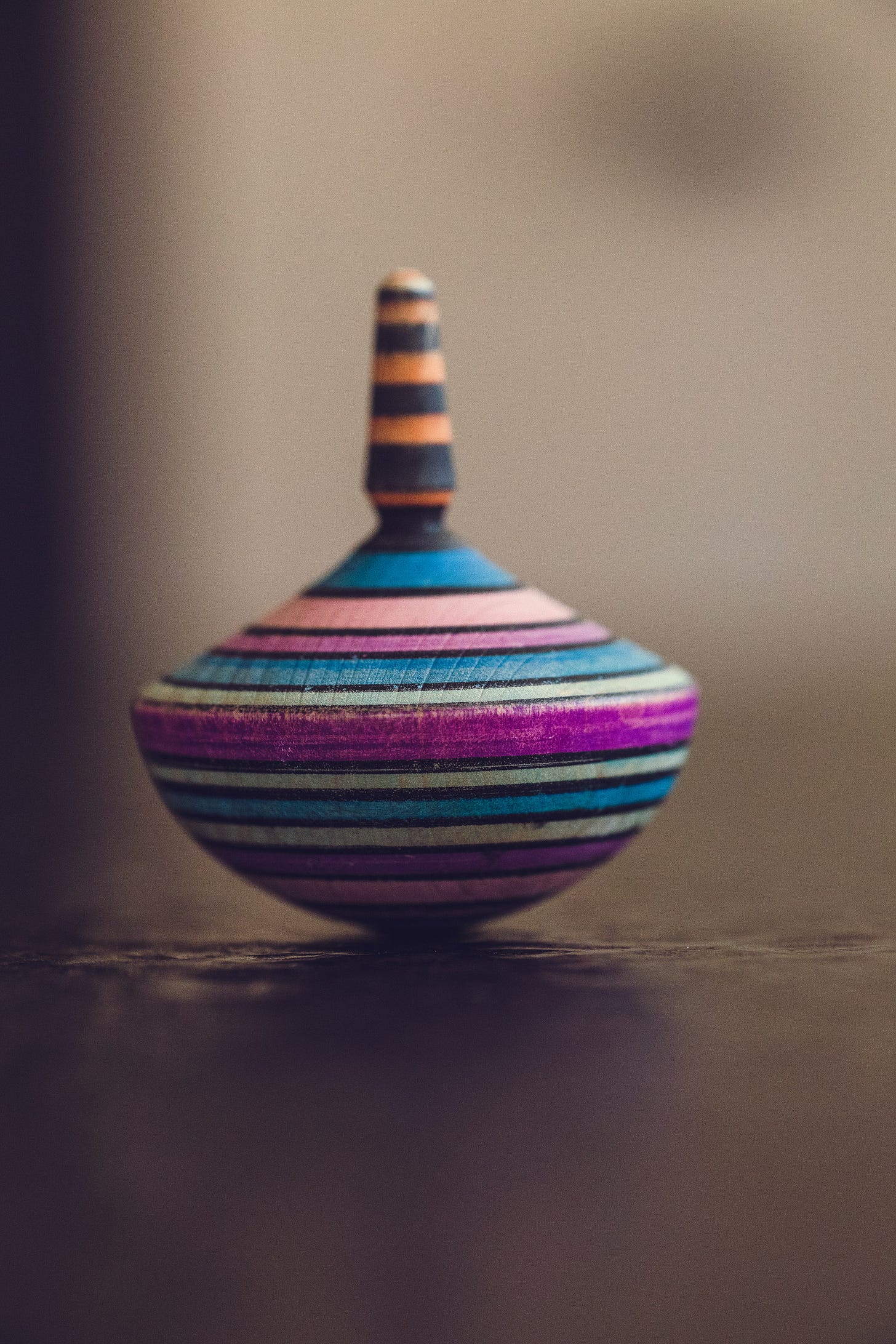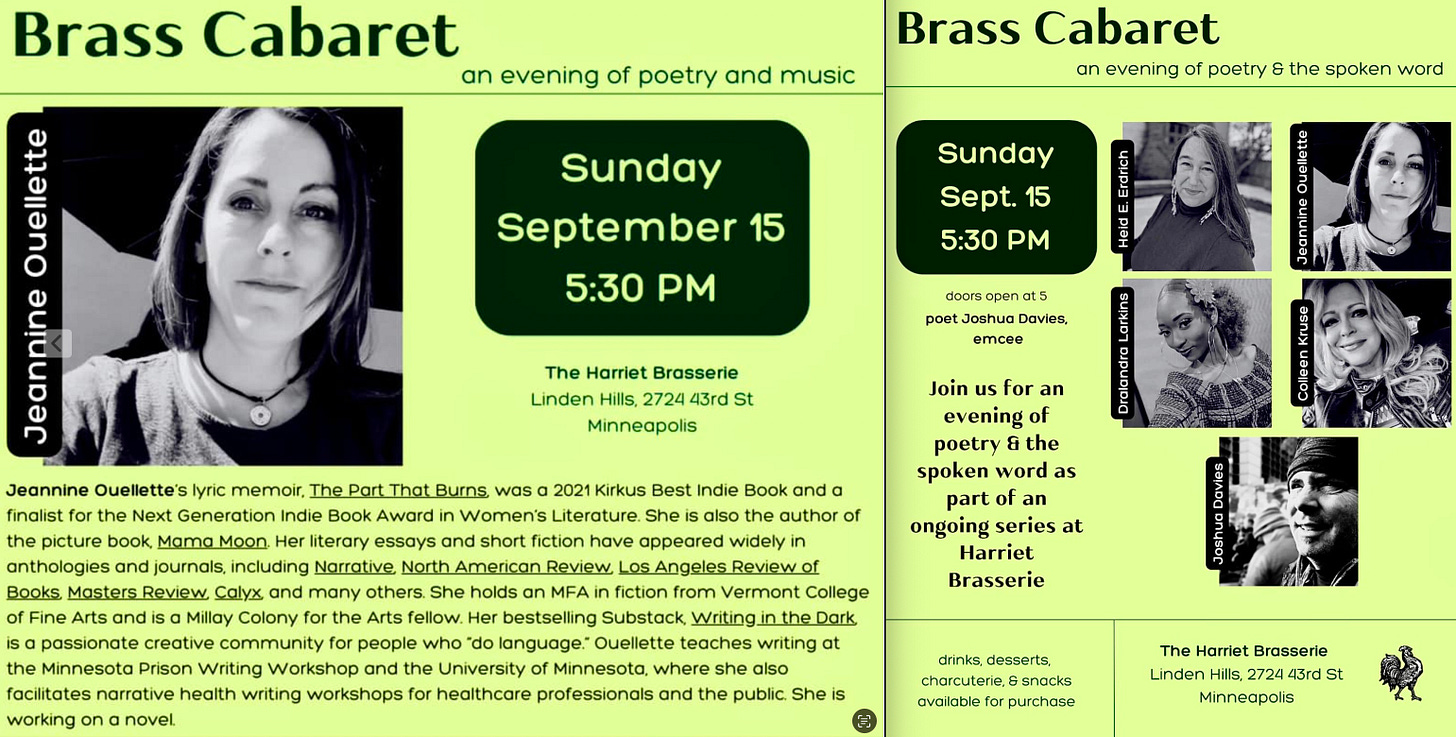Like spinning tops whirling at high velocity, flash ... sets words and images in collision to form a larger whole. ~Gina Ochsner
Welcome to Week Three of Strange Containers: Flash, Hermits & Other Oddities, WITD's 4-Week Intensive For The Kind of Writing You Might Never Do Otherwise!
Recent & Upcoming at WITD
I spoke with of Some Things Considered about building literary communities and whether or not art can save us (hint: it can). Bad lighting & a raging cold, but rich, warm conversation. Listen here!
📝 Writing in the Dark: THE SCHOOL closes registration soon. SCHOOL is our new 9-month slow-writing program for people serious about advancing their craft and joyful about "doing language better.” Starts September 19. ALL LEVELS.
In-person reading September 15 with Brass Cabaret! Free! I’d love to see you!
Now for Strange Containers, Week Three! Let’s DO SOMETHING!
I can’t even believe we end this adventure next week, gah! It’s been spectacular. Week One and Week Two of Strange Containers were an absolute ruckus and mayhem of joyous, heart-wrenching, soul-healing creativity. Please know I am still reading through work in those comments sections, and finding it thrilling. I’m responding to as many as possible, and if I miss yours, it is not by intention. The work is delicious and I am gobbling up as much of it as I can.
And if you haven’t joined us yet but want to “set words and images in collision to form a larger whole,” please jump in!
This work is zany and unnerving. It sends your work running away from you in directions you didn’t anticipate in order to reveal things, including your own voice, that you may have lost along the way. It’s kind of magic.
So far we’ve played with hermits and braids—in flash-sized bits—and many people are writing things they’ve never written before. Some people are stunned by the inventiveness and originality of their own work—they can see with their own eyes that it’s so good.
Beyond that, people are discovering more healing in this writing than they have in notebooks worth of journaling. Some people are reading all their writings from Strange Containers to their therapists because it’s been so transforming. One therapist said the writing seemed to be “creating new neural pathways” for the writer.
This kind of writing does that, because it takes us out of familiarity and into newness in specific and constrained ways—something I’ve written about many times before, including here. Both hermits and braids tilt us into the unknown especially well because these forms use juxtaposition of incongruities to great effect—this technique is a natural method of creating meaning, surprise, and satisfaction.
This week, however, we’ll do something even harder, because it looks/seems simpler. We’ll play with flash for flash’s sake, a kind of “traditional” flash, if there is such a thing—after all, Dinty Moore himself says in The Best of Brevity anthology, “I’m done predicting what is possible and what is not in the flash form…” In twenty years of editing the Brevity journal, he’s observed that absolutely anything is possible in the flash form.
That said, Dinty also nods to his earliest understanding of flash as a “scene based” form covering “the smallest period of time possible, maybe only a few minutes.” And that’s what we’ll do this week. So, simple, but not easy. In fact, you might find it harder than hermits or braids, even though it seems so familiar— because that familiarity is actually a hurdle.
Don’t worry, we’ll surely discuss the paradox of familiarity in the comments this week.
First, though, let’s talk a little more about what this “traditional” form of flash really is—the overarching principles that might govern it. I say might because while the principles are powerful, there really are no rules. But principles give us a scrap of map to follow when approaching a scene-based, limited-time flash piece. Which, incidentally, is the subset of flash primarily explored in one of the most incredible long-form essays I’ve ever read on flash nonfiction, which I discuss in detail below the paywall.
To note, I say flash piece or “thing” because you can write fiction or nonfiction—totally up to you. Flash works beautifully in both genres and follows the same general conventions (which, as always, you can defy if you wish!). This week’s readings give examples of both.
So with that, here are the simplified principles or agreements that will create the flash “container” into which we’ll stuff our stories or essays this week.
This set of agreements will hopefully provide you with the minimum creative friction needed to lose yourself just enough to create something true.








